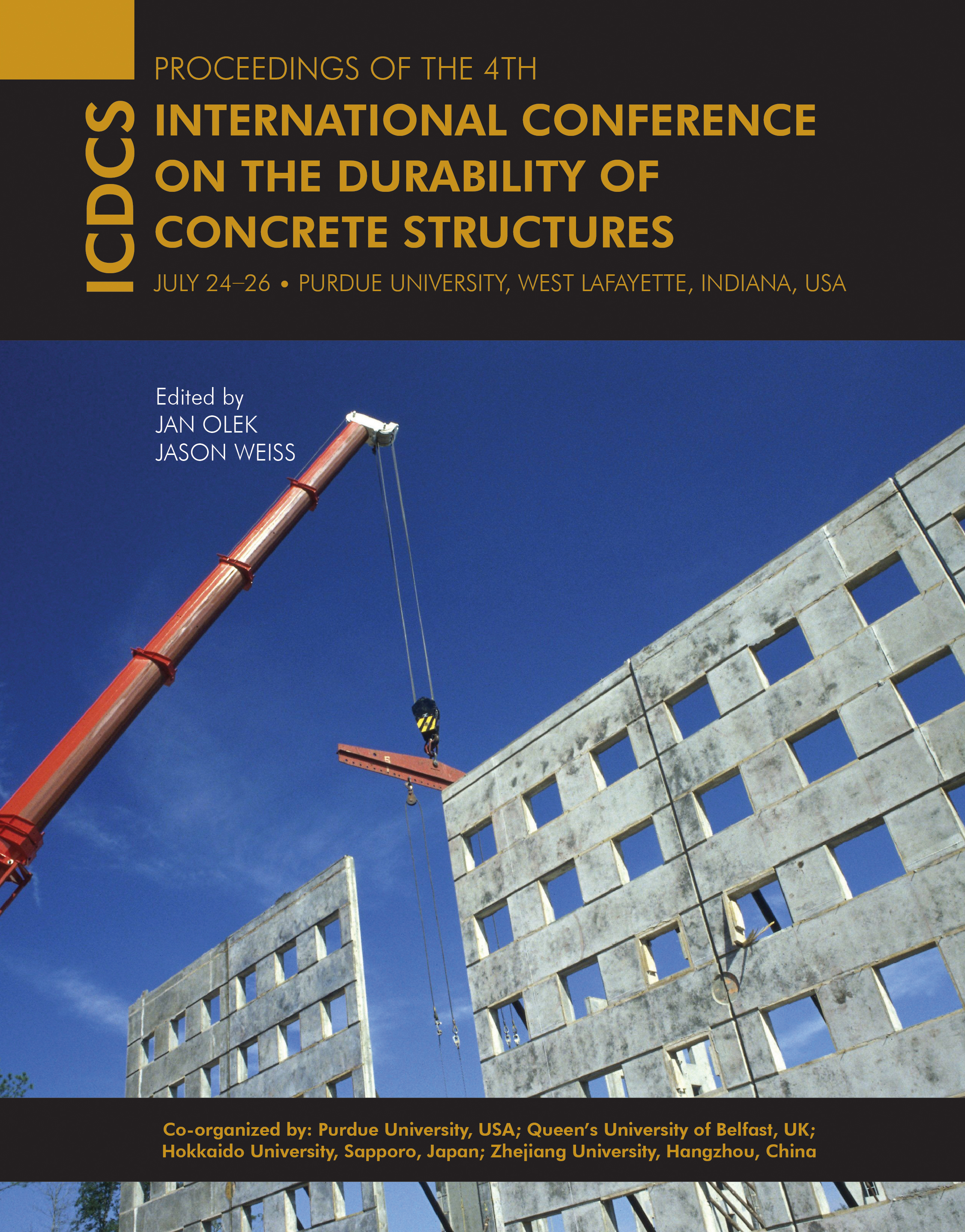Physical Model and Mesoscale Simulation of Mortar and Concrete Deformations under Freeze–Thaw Cycles
Abstract
The degradation of concrete material under multiple freeze–thaw cycles is an important issue for structures in cold and wet regions. This paper proposed a physical and mechanical model to explain the deformation behavior observed in previous experiments, from internal pressure calculation to mesoscale simulation, and for both closed and open freeze–thaw tests. Three kinds of internal pressures are considered in this study: hydraulic pressure due to ice volume expansion, crystallization pressure, and cryosuction pressure due to liquid–ice interface. The hydraulic pressure model combines Power’s model with poromechanical theories, which can well explain the reverse phenomenon (from expansion to contraction) observed in the closed test. The total internal pressure will be applied in a discrete numerical method (Rigid Body Spring Model) to simulate the deformation during each cycle, as well as the unrecoverable cracking (residual strain) at the end of each cycle. The constitutive laws are also modified considering the features of those internal pressures. Finally, the deformation behaviors of mortar, mortar–aggregate interface (closed test, 30 cycles), and the concrete (open test, 300 cycles) are simulated and compared with experiment measurements, which are found in a satisfactory agreement.
DOI
10.5703/1288284315378
Included in
Physical Model and Mesoscale Simulation of Mortar and Concrete Deformations under Freeze–Thaw Cycles
The degradation of concrete material under multiple freeze–thaw cycles is an important issue for structures in cold and wet regions. This paper proposed a physical and mechanical model to explain the deformation behavior observed in previous experiments, from internal pressure calculation to mesoscale simulation, and for both closed and open freeze–thaw tests. Three kinds of internal pressures are considered in this study: hydraulic pressure due to ice volume expansion, crystallization pressure, and cryosuction pressure due to liquid–ice interface. The hydraulic pressure model combines Power’s model with poromechanical theories, which can well explain the reverse phenomenon (from expansion to contraction) observed in the closed test. The total internal pressure will be applied in a discrete numerical method (Rigid Body Spring Model) to simulate the deformation during each cycle, as well as the unrecoverable cracking (residual strain) at the end of each cycle. The constitutive laws are also modified considering the features of those internal pressures. Finally, the deformation behaviors of mortar, mortar–aggregate interface (closed test, 30 cycles), and the concrete (open test, 300 cycles) are simulated and compared with experiment measurements, which are found in a satisfactory agreement.





